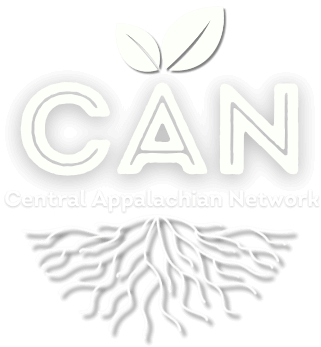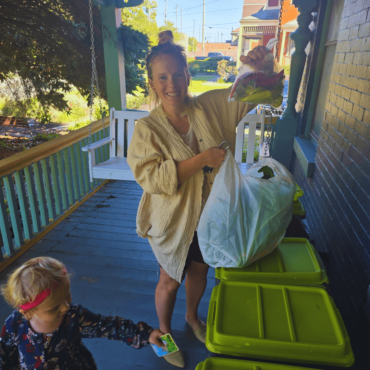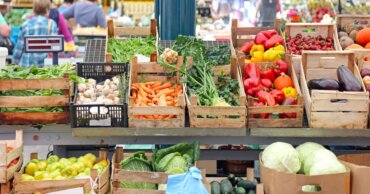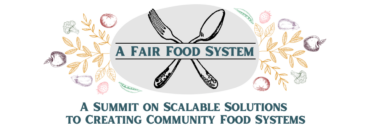The Central Appalachian Food and Agricultural Systems Working Group (FASWG) Processing, Aggregation, and Distribution (PAD) is a network of caring professionals who strive to accelerate the culturally responsive, small-acre mountain farming and local food economy in Central Appalachia.
You are welcome to join like-minded professionals working to see a day when we employ the region’s natural and cultural strengths to feed Central Appalachians, deeply value rural communities, share regional wealth and abundance, and empower traditionally marginalized communities to fully take part in the regional food system.
Why You Should Join
The Processing, Aggregation, and Distribution (PAD) Working Group strives to help farmers across Central Appalachia build better access to reach larger markets for their products.
Through monthly meetings, this Working Group strives to connect farmers and agricultural producers to the nonprofits/NGOs, funders, government agencies and businesses interested in impacting the potential for business growth, new jobs, and increased income that depends on the availability and access to infrastructure for value-added processing, product aggregation, and efficient distribution.
The Working Group discusses new opportunities for market growth and explores new resources to expand agricultural product distribution. New skills and knowledge you can gain from this Working Group:
- Connect producers to markets
- Provide and distribute educational materials
- Create and promote marketing and training tools
- Coordinate policy work
- Facilitate collaboration among value chain participants
- Some intermediary organizations also play additional roles in the value chain
This Group, and its participants, advocate (with funders, producers, and others) for the place-and-asset-based food and agriculture system we know we need.
- Producers experience robust land access across the region that allows Central Appalachia to feed Central Appalachians.
- Producers have the support, tools, and capital linkages necessary to establish and sustain profitable, regenerative farms. Currently plan to attain this through the eventual creation of a first-time buyers program that the group laid out in the summer of 2021 and is summarized here.
- Farming in Central Appalachia is equitable and profitable because the risk and reward of farming are balanced and carbon sequestration supports farmer resilience and profitability.
- Local food and subsequent nutritional security and health equity are the standards for consumers in Central Appalachia.
- Central Appalachia’s processing, aggregation, and distribution infrastructure is anti-fragile because of collective planning and building; interregional production planning and distribution; strong local value chains; and mutually-beneficial rural-urban connections. In other words, the region’s infrastructure can withstand and ultimately benefit from unexpected stressors (like the COVID-19 pandemic).
Who Should Join
This Working Group strives to connect and supports those who are:
- Considering implementing agriculture infrastructure (processing facilities, aggregation sites, or trucks/distribution)
- Farmers or group of farmers needing PAD-related supported for accessing markets
- Food hubs or others operating PAD infrastructure seeking to become more efficient and interested in regional collaboration
Join The Conversation
This Working Group meets monthly via Zoom. To get more information, contact:
- Kathlyn Terry – Appalachian Sustainable Development (ASD); and ASD’s food hub, Appalachian Harvest
- Adam Hudson – Refresh/Coalfields
Participants
- Kentucky Center for Agriculture and Rural Development (KCARD)
- Appalachian RC&D
- Community Farm Alliance
- Value Chain Cluster Initiative
- WV Department of Ag
- Heart and Hand House
- Rural Action
- Grow Ohio Valley
- ASD
- ACEnet
- Coalfield Development
- WF Food and Farm Coalition
- Grow Appalachia
- Sprouting Farms
- Community Food Initiatives
- New Roots Community Farm
Stay Connected
Get the latest updates from this Working Group on CAN’s social channels
Read our current blogs
Fresh RX for Moms in Kentucky
Sandra Ballew Barnes, CAN participant and Fresh Rx Coordinator, shares about one of Community Farm Alliance’s (CFA) successful produce prescription […]
Read More ›Regional Food Business Center Grant Invests in Appalachia with Funding for Food and Farm Businesses
The US government’s largest single investment in the Appalachian food system just hit our region. The U.S. Department of Agriculture […]
Read More ›Connect with Producers in Central Appalachia
FASWG Processing, Aggregation, and Distribution (PAD) members have launched a Facebook group to connect producers of all skill levels and […]
Read More ›A Fair Food System: Summit 6 Recap
Summit Five March 23, 2023 9:00AM–1:00PM EST Day Six Recording: https://youtu.be/fi5W6vPUm6Q Slides: CAN Summit 6 Slides Links & Additional Resources: […]
Read More ›A Fair Food System: Summit 5 Recap
Summit Five January 26, 2023 9:00AM–1:00PM EST Day Five Recording: https://youtu.be/l3Dsd63S6AA Slides: CAN Summit 5 Slides Links & Additional Resources: […]
Read More ›A Fair Food System: Summit 2 Recap
Summit Two August 25, 2022 9:00AM–1:00PM EST Day Two Recording: https://youtu.be/Dp4f04r7l0A Please note: YouTube copyright doesn’t allow the inclusion of the […]
Read More ›Additional Resources
Thriving local food economies can support the development of diversified and resilient economic bases, increase local control of wealth, empower local individuals and communities, increase self-sufficiency and decrease dependence on government benefits, and help to protect natural resources such as soil, water, and air quality.
CAN works to develop and strengthen local food value chains, which we define as supply chains infused with the triple bottom-line values of promoting financial, social, and environmental goals. Local food value chains include producers, processors, aggregators, distributors, farmers markets, wholesale buyers, consumers, and a wide variety of important supporters. In five sub-regions throughout Central Appalachia, CAN works to develop infrastructure, make connections, and build capacity to increase the profitability and sustainability of these value chains.
CAN’s participating organizations and many of our partners act as “intermediaries” in these chains. Intermediaries:
- Connect producers to markets
- Provide and distribute educational materials
- Create and promote marketing and training tools
- Coordinate policy work
- Facilitate collaboration among value chain participants
- Some intermediary organizations also play additional roles in the value chain
Economic Impacts
CAN tracks economic impact indicators to show the growth of the local food system since 2009. The following chart shows the growth of the CAN-supported value chains according to several key measures. All measures are calculated in relation to 2009 data; that is, 2009 numbers establish the baseline, and subsequent growth for each measure is compared as a percentage increase over the 2009 number.
The total impacts for 2018 include:
- 1,608 producers or food businesses participating in CAN-affiliated value chains
- $20.1 Million in sales revenue to producers
- $16.1 Million in purchases by 164 wholesale/institutional buyers
- 1,478.5 Full time equivalent jobs, including 1,195.5 year-round positions
- $3 Million in value chain investment, including $2.1 Million from sources within the value chain




